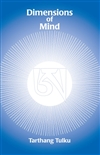Lucid and economical, the Concise Introduction delivers a brisk, fast-moving survey. For many years, Powers' nearly six hundred-page Introduction to Tibetan Buddhism has served as the field's most authoritative and comprehensive introductory text on Tibet's distinctive Buddhist tradition. Now Powers has responded to requests to provide an introductory text in compact form. This slimmed-down reference explains the core Buddhist doctrines and the practices of meditation and tantra in an engaging manner. A survey of the four main sects of Tibetan Buddhism and a succinct history of the Tibetan cultural region complete this work.
Concise Introduction to Tibetan Buddhism, John Powers, Snow Lion Publications, Paperback, 2008, 165 Pages, $18.95
John Powers studied at College of the Holy Cross Massachusetts, taking a Bachelor of Arts in Philosophy and Religion there in 1979. He went on to earn a Master of Arts in Indian philosophy at McMaster University in Ontario then a Doctorate of Religious history from the University of Virginia. From 1995 to 2016, Powers taught at the Australian National University, where he was made professor in 2008. Powers, like several others, left the university after a controversial restructuring of the department.[citation needed]
A practicing Buddhist, he has special expertise in Buddhism in Tibet. He was invited by the Dalai Lama's Australian office, as the leading expert in the country, to Tenzin Gyatsho's 70th birthday celebration .[1] As well as publishing work on Buddhist spirituality and meditation techniques, he has written extensive translations of Tibetan works, and written on the history and culture of Tibet , India, and China.
Powers, who supports Tibetan autonomy, has compared the Chinese treatment of the Tibetan people to the fate of the Aborigines during the colonization of Australia.[2]
|
Contents: A Concise Introduction to TIBETAN Buddhism |
|
|
Technical Note |
7 |
|
Introduction |
11 |
| 1. |
THE INDIAN BACKGROUND |
17 |
|
Origins of Tibetan Buddhism |
17 |
|
The Buddha |
18 |
|
The Buddha's Teaching Career |
26 |
| 2. |
MAHAYANA |
31 |
|
Origins |
31 |
|
Mahayana Doctrines |
36 |
|
The Bodhisattva Path |
38 |
| 3. |
SOME IMPORTANT BUDDHIST DOCTRINES |
45 |
|
Karma and Rebirth |
45 |
|
Dependent Arising |
50 |
| 4. |
MEDITATION |
55 |
|
The Role of Meditation in Indian and Tibetan Buddhism |
55 |
|
Stabilizing and Analytical Meditation |
58 |
|
The Five Buddhist Paths |
60 |
| 5. |
TANTRA |
63 |
|
The Place of the Tantras in Buddhist Literature |
63 |
|
Tantra as a Branch of Mahayana |
67 |
|
Tantric Symbols |
72 |
|
Entering Tantric Practice |
74 |
|
The Four Classes of Tantra |
79 |
|
The Preliminary Practices |
85 |
|
Death and Dying in Tibetan Buddhism |
94 |
| 6. |
THE FOUR ORDERS |
103 |
|
Similarities and Differences |
103 |
|
The Nonsectarian Movement |
106 |
|
Nyingma |
110 |
|
Kagyu |
117 |
|
Sakya |
126 |
|
Geluk |
133 |
|
|
|
|
Lexicon of Buddhist Terms |
141 |
|
Bibliography |
149 |
|
English-Tibetan-Sanskrit Glossary |
153 |
|
Terms |
153 |
|
Names |
157 |
|
Locations |
159 |
|
Titles of Works Mentioned |
160 |
|
Index |
161 |
|



